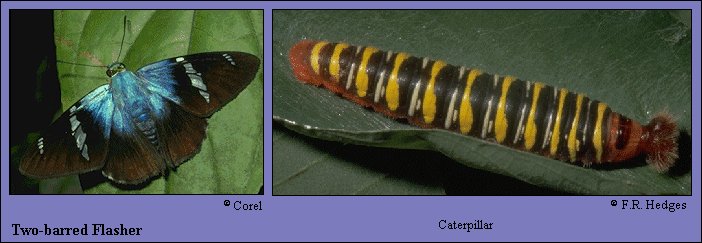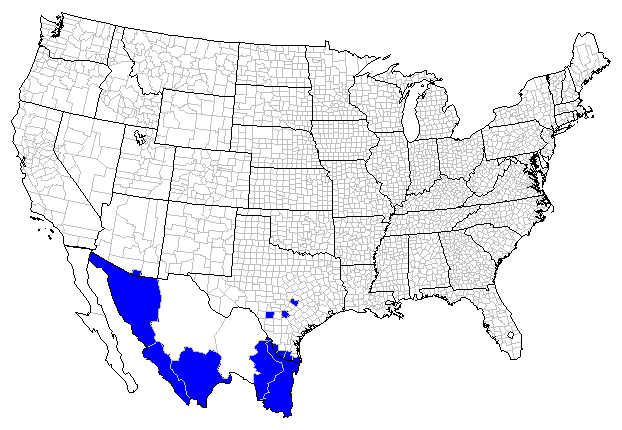 |
 

 |



Two-barred Flasher (Astraptes fulgerator (incl. azul))
Wing span: 1 7/8 - 2 3/8 inches (4.8 - 6.1 cm).
Identification: Tailless; wings brown. Upperside of body and basal part of wings are iridescent blue; forewing has a white band and small white spots near the apex. Male has a costal fold containing scent scales on the forewing. Underside of forewing has a white patch at base; head and thorax are yellow below.
Life history: Adults rest upside down under large leaves. Males perch in sunny openings to wait for females.
Flight: All year in South Texas.
Caterpillar hosts: Coyotillo in Texas and Vitex in Mexico.
Adult food: Flower nectar or bird droppings.
Habitat: Tropical forests near rivers or streams.
Range: Argentina north through Central America to the lower Rio Grande Valley, Texas. Strays to central Texas and southeastern New Mexico.
Conservation: Populations in the lower Rio Grande Valley should be monitored and conserved.
The Nature Conservancy Global Rank: G5 - Demonstrably secure globally, though it may be quite rare in parts of its range, especially at the periphery.
Management needs: Maintain habitats in the lower Rio Grande Valley, Texas.
References:
Opler, P. A. and V. Malikul. 1992. A field guide to eastern butterflies. Peterson
field guide #4. Houghton-Mifflin Co., Boston. 396 pages, 48 color plates.
Scott, J. A. 1986. The butterflies of North America. Stanford University Press,
Stanford, Calif. 583 pages, 64 color plates.
Author: Jane M. Struttmann

